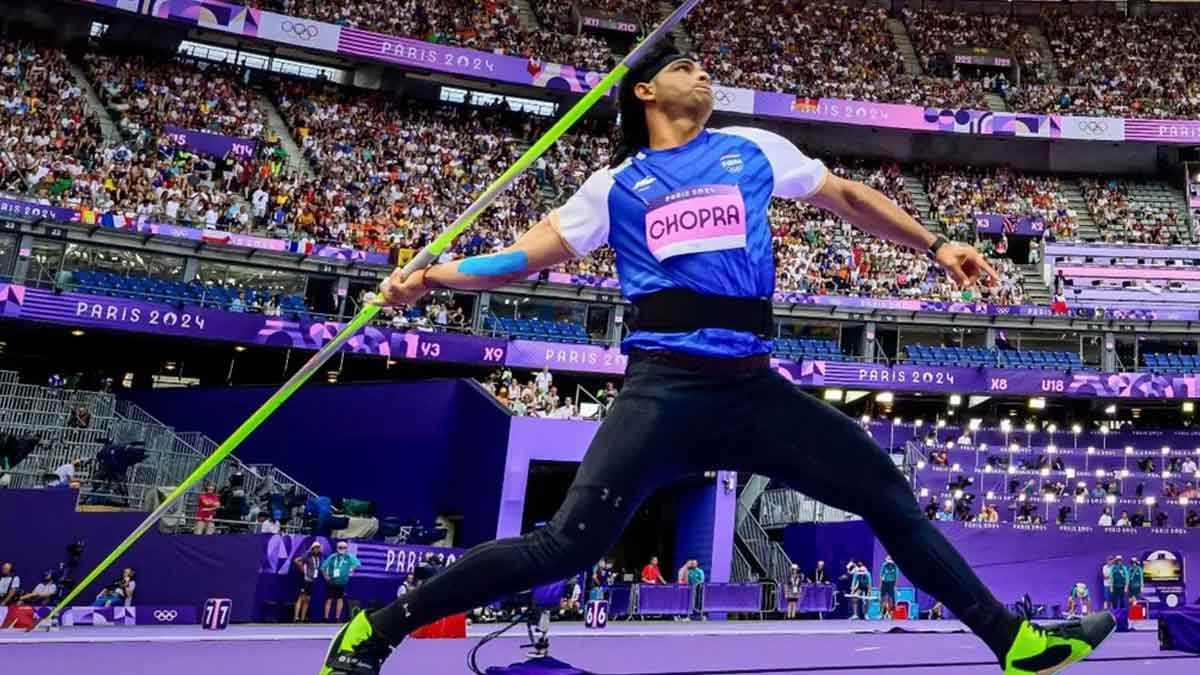
Indian javelin thrower Neeraj Chopra's silver medal performance at the Paris 2024 Olympics was nothing short of remarkable, but it came with its own set of challenges. The Olympic champion has revealed that his performance was hampered by a long-standing inguinal hernia, a condition that has plagued him for some time. Despite the injury, Chopra managed to achieve a personal best throw of 89.94 meters, securing the silver medal. However, the condition has now reached a point where he must seek medical intervention as advised by his doctors.
Table of Content:-
The Impact of Inguinal Hernia on Athletes
For athletes like Chopra, an inguinal hernia can be a significant obstacle. The physical demands of sports such as javelin throwing place immense pressure on the abdomen and groin area, exacerbating the symptoms of this condition. Inguinal hernias occur when tissue, typically part of the intestine, pushes through a weak spot in the abdominal muscles. This protrusion can cause pain, especially during activities that involve straining, bending, or lifting.
In the case of Neeraj Chopra, the inguinal hernia likely caused discomfort and limited his ability to perform at his peak. Despite this, his determination and skill allowed him to still achieve an outstanding result at the Olympics. However, the ongoing pain and potential complications make it clear that treatment is necessary.
View this post on Instagram
Understanding Inguinal Hernia: Causes and Symptoms
An inguinal hernia is a common condition that affects many people, but it can be particularly troublesome for athletes. As per Dr M Manisegaran, Consultant Surgical Gastroenterologist- Minimal Access Surgery, Bariatric, Metabolic & Robotic Surgery, Yashoda Hospitals, Hyderabad, the condition manifests as a bulge in the groin area, which becomes more pronounced when the individual is standing, coughing, or straining. The symptoms can range from mild aches to severe pain, especially during physical exertion.
Also Read: 4-Year-Old Boy Bitten By Stray Dog Dies Of Rabies In Tamil Nadu; Symptoms To Look Out For
Some of the key symptoms of an inguinal hernia include:
- A noticeable bulge on either side of the pubic bone, which becomes more visible when standing or straining.
- A burning or aching sensation at the site of the bulge.
- Pain or discomfort in the groin area, particularly when bending over, coughing, or lifting heavy objects.
- A feeling of heaviness or dragging in the groin.
- Weakness or pressure in the groin area.
In some cases, pain and swelling around the testicles if the protruding intestine extends into the scrotum.
In children, the symptoms may be less obvious but can still include irritability, a decreased appetite, and a visible bulge when crying or straining.

Potential Complications of Inguinal Hernia
While an inguinal hernia may start as a minor inconvenience, it can lead to serious complications if left untreated. The most concerning risks include:
Incarcerated Hernia
When the herniated tissue becomes trapped and cannot be pushed back into the abdomen, it is considered incarcerated. This can lead to bowel obstruction, causing severe pain, nausea, and vomiting.
Strangulated Hernia
This occurs when the blood flow to the trapped tissue is cut off, leading to the death of the affected tissue. A strangulated hernia is a medical emergency that requires immediate surgery to prevent life-threatening consequences.
For athletes, the risk of these complications is heightened due to the intense physical activity they engage in. The repetitive strain on the abdominal muscles can exacerbate the condition, making it essential to address the hernia promptly.
Treatment and Management of Inguinal Hernia
Surgery is the most common treatment for an inguinal hernia, especially if the hernia is causing pain or growing larger. The procedure involves repairing the weakened area of the abdominal wall, often with the help of a mesh to reinforce the tissue and prevent recurrence. For athletes, the recovery process is crucial, as they need to regain full strength and mobility to return to their sport.
Neeraj Chopra's decision to seek treatment is a wise one, as it will allow him to address the condition before it worsens. Post-surgery, with proper rehabilitation and care, he is likely to make a full recovery and continue his athletic career without the hindrance of the hernia.
Bottomline
Neeraj Chopra's battle with an inguinal hernia highlights the challenges that even the most elite athletes can face. Despite the pain and discomfort, his performance at the Paris 2024 Olympics remains commendable. However, the importance of addressing such medical conditions cannot be overstated. As Chopra prepares for treatment, his story serves as a reminder that health is paramount, even for those at the pinnacle of their sporting careers.
Also watch this video
How we keep this article up to date:
We work with experts and keep a close eye on the latest in health and wellness. Whenever there is a new research or helpful information, we update our articles with accurate and useful advice.
Current Version